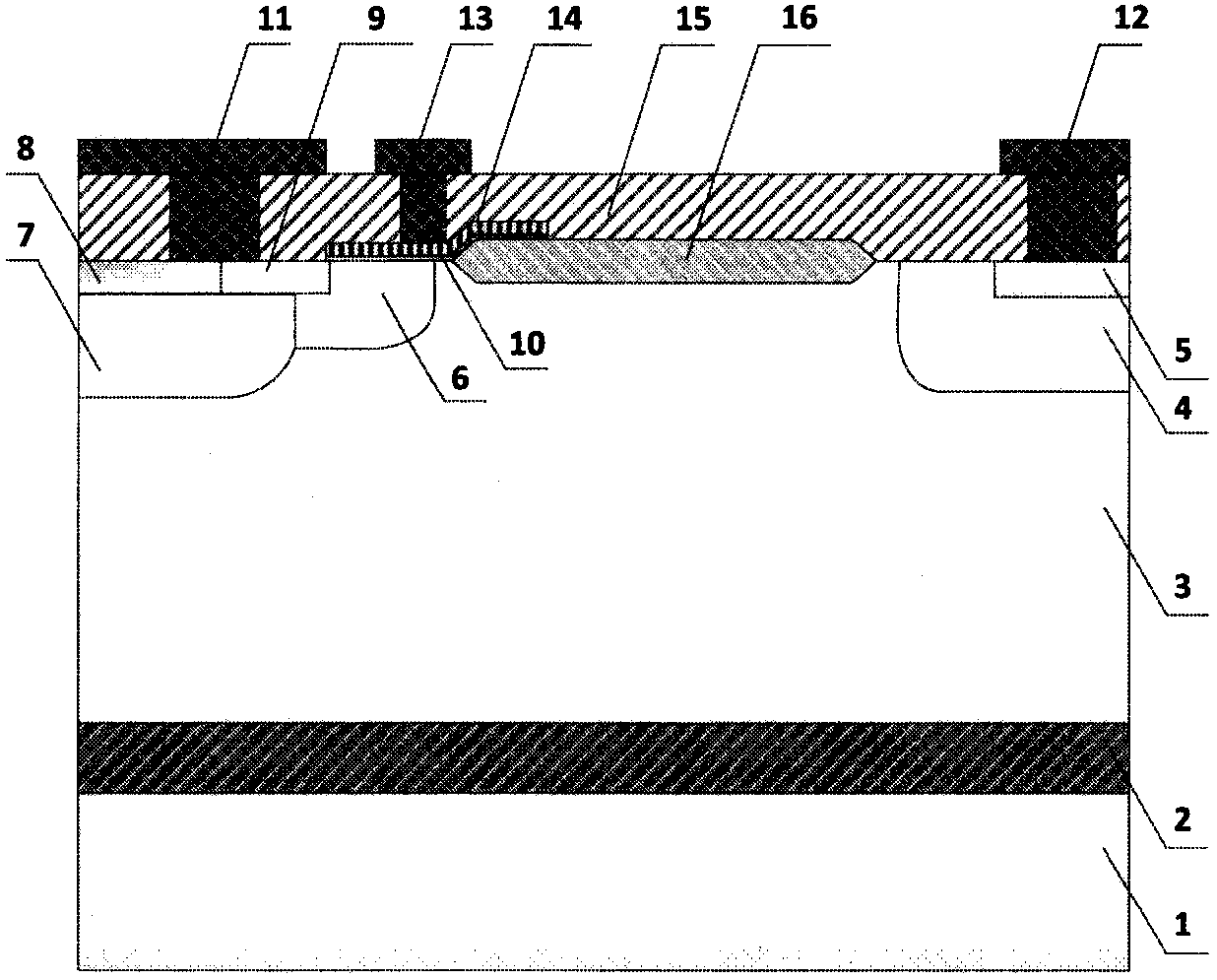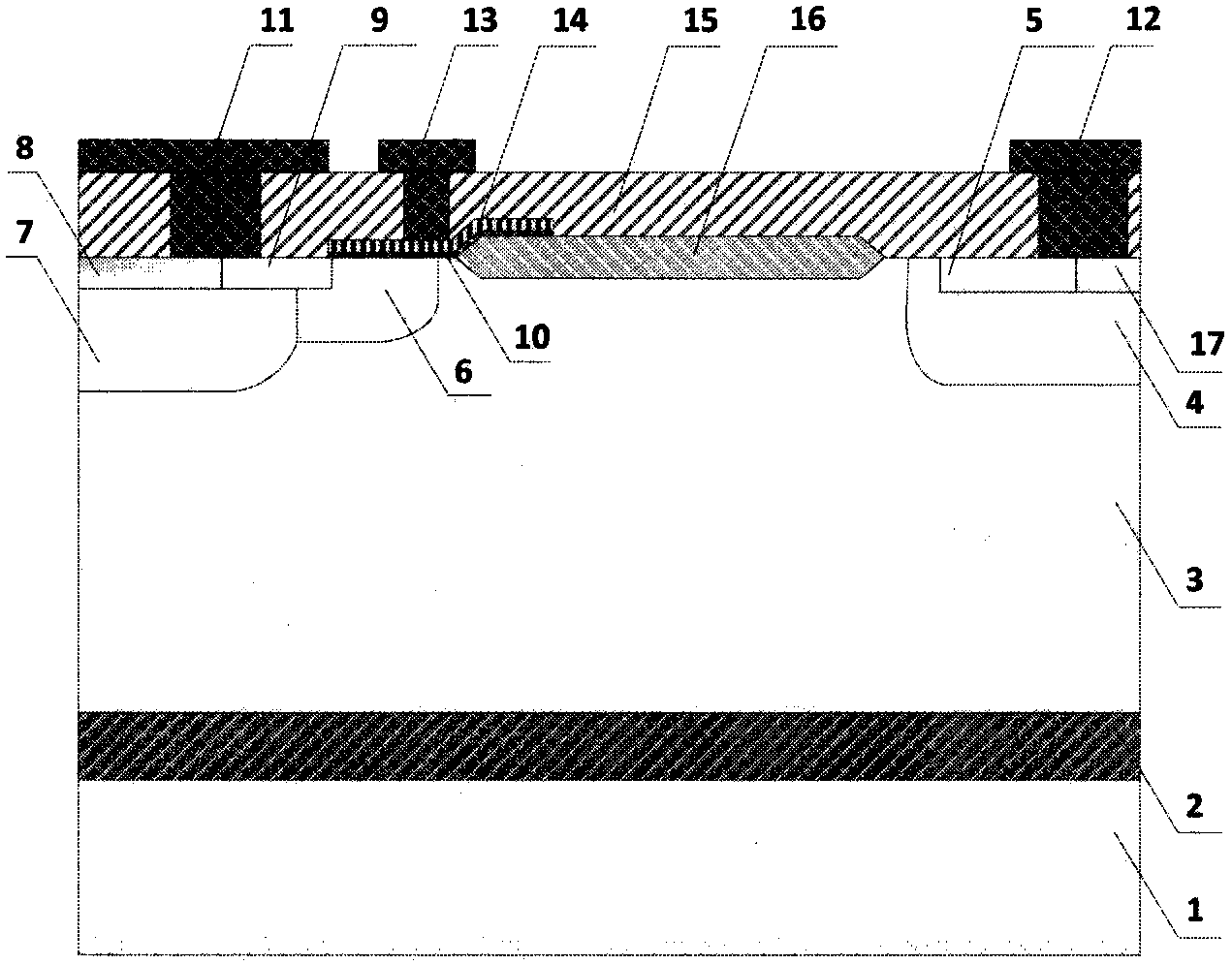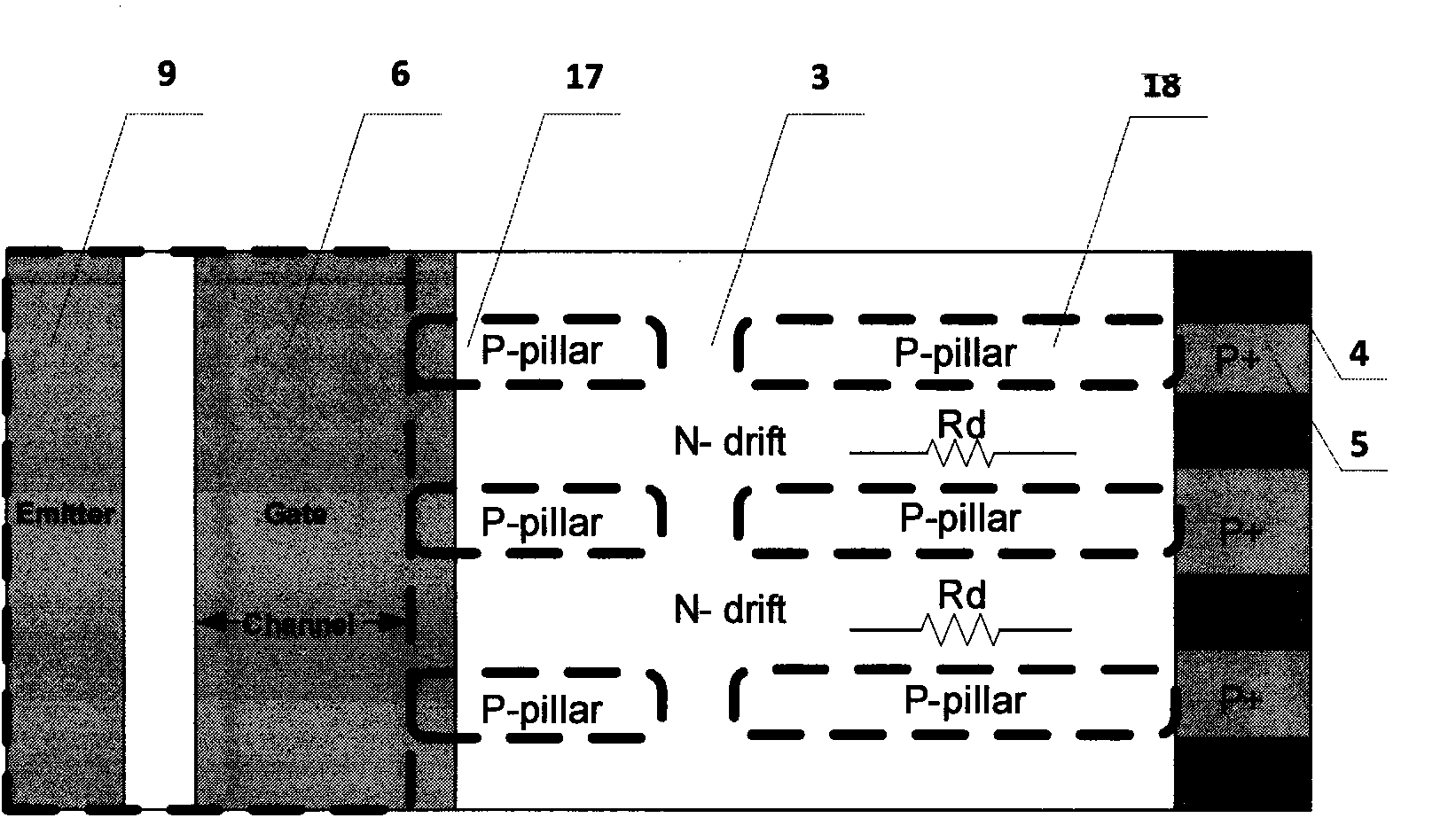Novel power semiconductor device
A technology of power semiconductors and devices, applied in the direction of semiconductor devices, electrical components, circuits, etc.
- Summary
- Abstract
- Description
- Claims
- Application Information
AI Technical Summary
Problems solved by technology
Method used
Image
Examples
Embodiment 1
[0023] image 3 Shown is a top view structure diagram of a new type of power semiconductor device, including the anode P + Zone (5), anode N + Region (4), N-type drift region (3), emitter N + region (9), P-type channel region (6) and P-type pillar regions (17, 18).
[0024] The anode of the structure of the present invention adopts N + District (4) and P + In the overlapping short-circuit structure of the region (5), there are two parts of the P-type column region (17, 18) in the drift region, which are respectively connected with the P-type channel region (6) of the cathode and the P-type channel region (6) of the anode. + Area (5) is connected. Through the adjustment of these structures, the NDR phenomenon no longer occurs, the latch-up effect during high-current operation is effectively suppressed, the switching speed is greatly improved, and the withstand voltage of the device is also improved to a certain extent.
Embodiment 2
[0026] Figure 4 Shown is a new type of power semiconductor device along the anode N + Sectional drawing of the area. Including substrate (1), anode N + region (4), anode metal (12), N-type drift region (3), field oxide layer (16), cathode P + region (8), cathode P-type body region (7), P-type channel region (6), emitter N + region (9), cathode metal (11), polysilicon gate (14), LIGBT device gate oxide layer (10) and polysilicon gate metal (13).
[0027] When the device is just turned on, the anode N with P-type + \P + Fast SOI LIGBT device inversion channel formation with overlapping shorts. When a positive voltage is applied to the anode, the electron current in the inversion channel is injected into the drift region (3) and passes through the anode N + Area (4) is extracted, and the device works in LDMOS state at this time, and there is no conductance modulation phenomenon.
Embodiment 3
[0029] Figure 5 Shown is a new type of power semiconductor device along the anode P + Sectional drawing of the area. Including substrate (1), anode P + region (5), anode metal (12), N-type drift region (3), field oxide layer (16), cathode P + region (8), cathode P-type body region (7), P-type channel region (6), emitter N + region (9), cathode metal (11), polysilicon gate (14), LIGBT device gate oxide layer (10), polysilicon gate metal (13) and P-type pillar regions (17, 18).
[0030] Figure 5 and Figure 4 The difference is that it is more Figure 4 There are two more P-type pillar regions (17, 18), and its anode N + Zone (4) consists of anode P + District (5) replaces.
[0031] In order to make the NDR phenomenon of the anode short-circuit structure no longer occur, the resistance between the P-type pillars (4) should be large enough, so that a voltage difference of 0.7V can be reached when the current is extremely small, so that the anode P + (5) and the P-type pi...
PUM
 Login to View More
Login to View More Abstract
Description
Claims
Application Information
 Login to View More
Login to View More - R&D
- Intellectual Property
- Life Sciences
- Materials
- Tech Scout
- Unparalleled Data Quality
- Higher Quality Content
- 60% Fewer Hallucinations
Browse by: Latest US Patents, China's latest patents, Technical Efficacy Thesaurus, Application Domain, Technology Topic, Popular Technical Reports.
© 2025 PatSnap. All rights reserved.Legal|Privacy policy|Modern Slavery Act Transparency Statement|Sitemap|About US| Contact US: help@patsnap.com



